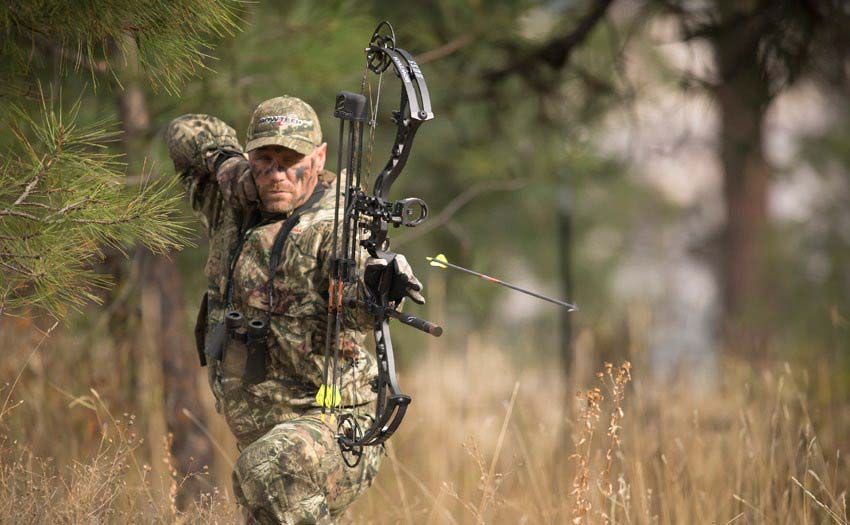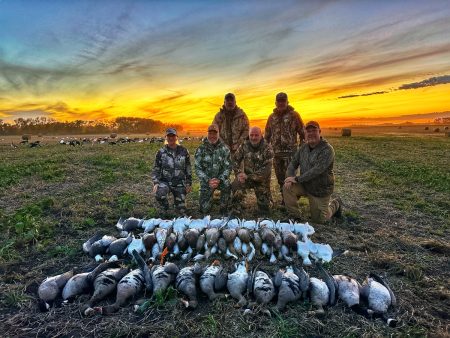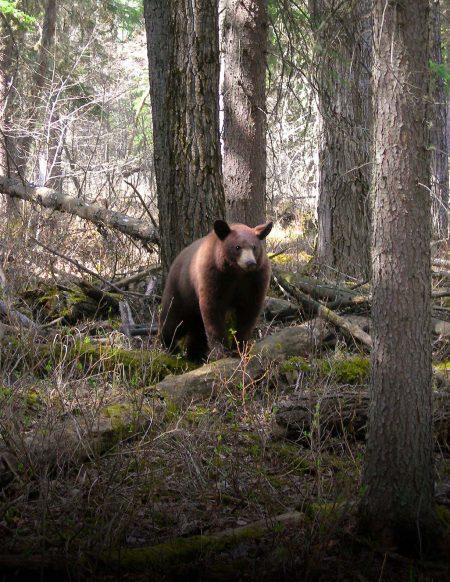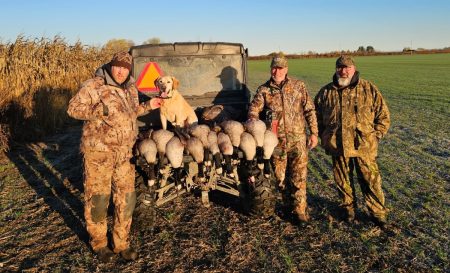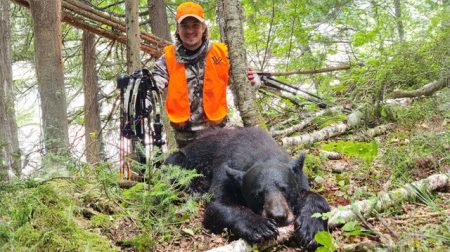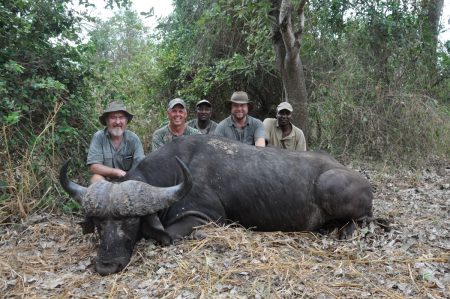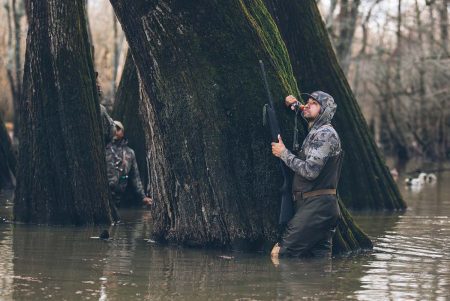I have 20 deer seasons under my belt, and Lord willing, I’ll have many more. While I have many mule deer and Whitetail racks in my home, I’m not too proud to say that I should have many, many more. I’ve made countless mistakes over the years that have cost me big time. Of course, deer are smart critters with the home-field advantage, so many of my hunts have ended in disgust rather than a victory in a short blood trail. The cause of those errors has usually been one or two completely avoidable mistakes. Sound familiar?
LESSONS 1
Needlessly rushing a shot can easily result in a bad hit or a miss. Slow down!
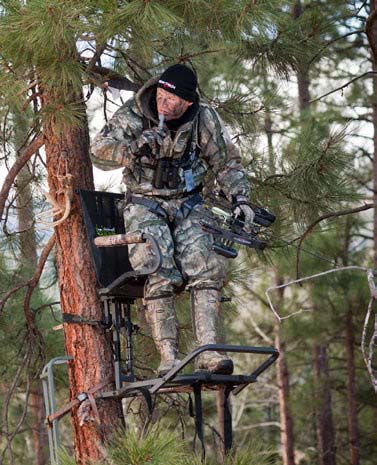
Confidence is a good thing when it comes to shooting at deer, but overconfidence – celebrating success before it happens – is a great way to lose your focus in the situation and ruin your chance of success. (Photo courtesy of Bowtech Archery)
The memories of the handful of bucks that evaded my arrows and bullets still sting today. Though I recall what I should have done differently, and I wish I could rewrite history and claim those bucks, I’m not sure I’d be the hunter I am today if I had been successful those times. I have worked extremely hard for just about everything I’ve accomplished in life, and I know very well that struggling and making mistakes is the gateway to learning—and by learning, you become better and more proficient at whatever you’re struggling to achieve.
With most deer seasons already closed or closing soon, now is a great time to reflect on your own mistakes. Think about those from this past season and remember those from your entire hunting tenure. But don’t dwell on the hurt and frustration of missed chances. Instead, use your mind’s eye to pick apart those encounters and assess what steps should have taken place for the outcomes to be reversed and end with a short blood trail, rather than you having your head in your hands.
Before you begin reflecting on your own losses, here are a handful of stories that still sting for me. Ultimately, though, they gave me the chance to grow and to become a more effective deer hunter.
Rushing the Shot
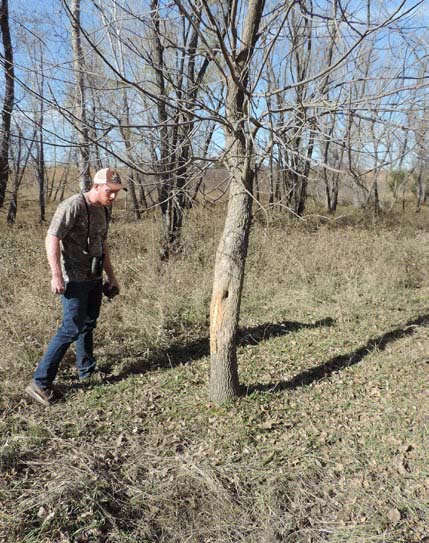
If you have a successful hunt in a specific area one season, it doesn’t mean you’ll automatically have success there again the next season. Things like flooding, crop rotations, or sudden influxes of hunting pressure can render good spots unproductive. (Photo courtesy of Darron McDougal)
Back in 2007, I missed a chance at a 150-plus-inch Whitetail. I was sneaking along a ridge in Nebraska a few hundred yards away from my brother, who was sneaking along another ridge. Suddenly, I saw a big buck and a doe bounding downhill from where my brother was situated. (Later, I learned that he’d almost shot at the bruiser, but didn’t want to risk a marginal hit and so had held off.) As the two deer disappeared in the canyon below, I quickly dove behind a small cedar, the only cover available. The deer suddenly popped up 75 yards away, facing me. I leaned out from the cedar and shot at the buck. My hasty shot hit somewhere in the snow behind him. The big public-land buck was gone as fast as he’d appeared.
As an 18-year-old, that one really hurt. It would have been my largest deer at that time. Now, I know that I made three distinct mistakes that resulted in the miss. First, when I saw the deer, I should have set my muzzleloader up on my shooting sticks rather than trying an off-hand shot. Second, with an open-sighted muzzleloader and the range that existed, I should have waited for the buck to turn broadside. Since I wasn’t distinguishable as a human in my location behind the cedar, he likely would have done that. Third, I completely rushed the shot and pulled the trigger fairly hard. While time has healed that wound, this was a tough pill for me to swallow at the time. The encounter surely taught me to slow down and not get caught up in the moment, though.
Overconfidence
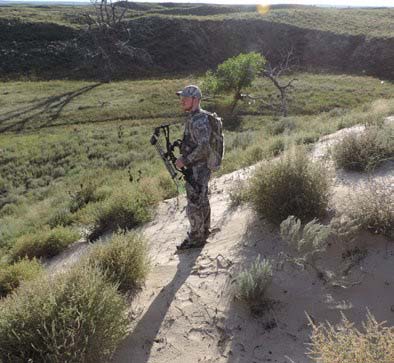
Don’t be afraid to lace up your boots and hike deep into areas where mature bucks are hiding. (Photo courtesy of Darron McDougal)
A brute-bodied Kansas buck was courting a doe 150 yards from my tree stand in November 2016. I grunted and snortwheezed multiple times, and finally got his attention. As he beelined my way, I was already following the blood trail and celebrating with my wife. I was overconfident when he stopped 23 yards away in my shooting lane. I was wearing gloves and shooting a T-handle release, and when I punched at the trigger, I missed it. My mind was anticipating the shot, so when the bow didn’t fire, my muscles relaxed just a bit and I crept forward from full draw. That motion caused my release’s open jaw to slip out of my D-loop. My arrow harmlessly drove into the dirt beneath the buck.
Confidence is a great thing, but when that deer approaches and you’re already eating steaks and looking at the antlers on the wall, it’s easy to forget to focus on all the little details that have to happen to make a good shot. When you lose focus of those things, it’s easy to mess up badly, just as I did. My focus certainly wasn’t in the right place during that encounter. So, be confident, but don’t be overconfident. I should know.
Relying Too Much on Last Year’s Intel
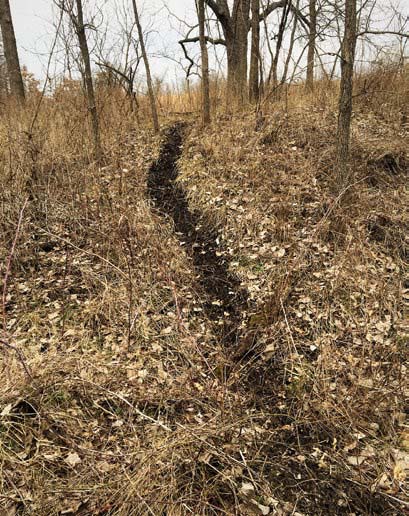
In his younger years, the author often made the mistake of hunting over heavy sign in easily accessible areas. Yes, deer are using these areas daily, but most mature-buck activity transpires in these areas after dark. (Photo courtesy of Darron McDougal)
My first time bowhunting during the rut in Oklahoma yielded a 150-inch public-land buck. So, when my brother and I returned to the same wildlife area the following year, I was sure I’d pull off a repeat. My plan was to hunt the same stand locations, see multiple nice bucks, and bring home a whopper.
But relying on what I’d experienced the year before was detrimental to our current hunt. When I had nailed my big buck, the fields on the wildlife area were filled with corn and soybeans. This time, the fields had been flooded out during spring and summer downpours. Instead of agricultural fields teeming with beans and corn, there was head-high grass. Rather than an area of food, it was now an area for bedding cover. The flood had completely changed how the deer were using the area.
Based on the lack of sign, I’d say that the flooding probably moved a lot of the deer from the riparian habitat into the surrounding prairies. We saw very few deer during our outing and not a single buck worth a second glance. To say it was frustrating would be a gross understatement. I learned on that trip that habitat changes can have huge impacts on your hunt and that you can’t always count on last year’s movement patterns. Things like flooding, timber cutting, crop rotations, and hunter pressure can alter what deer do. Rather than try to pull a rabbit out of a hat by hunting the same locations as the year before, we should have assumed an aggressive strategy and moved around to find deer on the surrounding prairies.
Hunting Easily Accessible Spots

You can’t pull a rabbit out of a hat if the hat doesn’t contain one. If your current spots aren’t yielding the action you expected based on last year’s intel, go back to the drawing board and try something different. (Photo courtesy of onX Hunt)
Before I began using mapping apps like onX (which I highly recommend, especially for DIY hunting), I was guilty of not hiking in deep enough to find out where the big bucks were hiding. I spent a lot of time hunting over deer sign, but these turned out to be locations on public land, where deer were making all of the sign nocturnally.
I’d find a trail blazed through some grass a few hundred yards from the vehicle and park my hinder there. Or I’d find a cornfield peppered with deer tracks and hunt the edge with the most sign. Don’t get me wrong: You don’t always have to hike in super-deep to encounter deer. But, think about this: If you easily found a spot with tons of deer sign, chances are that someone else, or maybe even multiple other hunters, have also hunted there. These types of spots generally receive more hunting pressure, which is why deer use them primarily at night.
In my younger days, there were many times I parked over worn trails and scrape lines without seeing bucks. If I put more thought into where those bucks were coming from, I could have hiked deeper toward their bedding areas and possibly intercepted them during daylight. I ran a very low percentage rate on mature-buck encounters in my younger years. But today, I see mature bucks on nearly every weeklong hunt. Sometimes, I even get into them within the first few days. When that happens, it’s because I hike deeper and hunt places most other hunters never reach.
Fix Your Mistakes to Become a Better Hunter
Many deer hunters fail to identify their mistakes, and even if they do, they keep making the same errors over and over again. Whether it is a successful one or not, I commit myself to learning something on every hunt. I especially want to learn from my mistakes so I can avoid them in the future. Though it isn’t the sole reason I hunt, since the ultimate goal is to kill a mature buck. I can’t consistently do that if I’m making dumb mistakes. Neither can you.
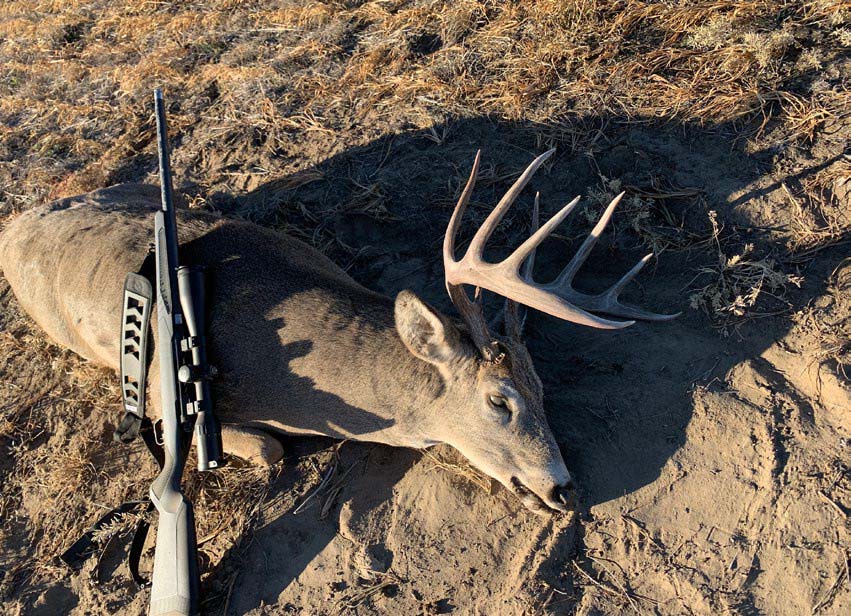
It’s the lessons learned from years of mistakes that have helped the author become a deadlier deer hunter who regularly takes quality bucks, like this South Dakota brute. Learn from your mistakes, and you, too, can become a better deer hunter. (Photo courtesy of Darron McDougal)
I’m not God’s gift to deer hunting, but I consider myself pretty dialed in as a deer hunter. In the period from November 2020 to November 2021, I killed four mature bucks on public-land hunts in three different states. I’m not saying that I don’t make mistakes anymore; I absolutely do. Now, though, I’m aware of what mistakes have cost me big opportunities over the years, and I’ve resolved not to make those mistakes anymore. Doing that has shaped me into a better deer hunter. I guess that’s the beauty of lessons learned.
By Darron McDougal
Per our affiliate disclosure, we may earn revenue from the products available on this page. To learn more about how we test gear, click here.






